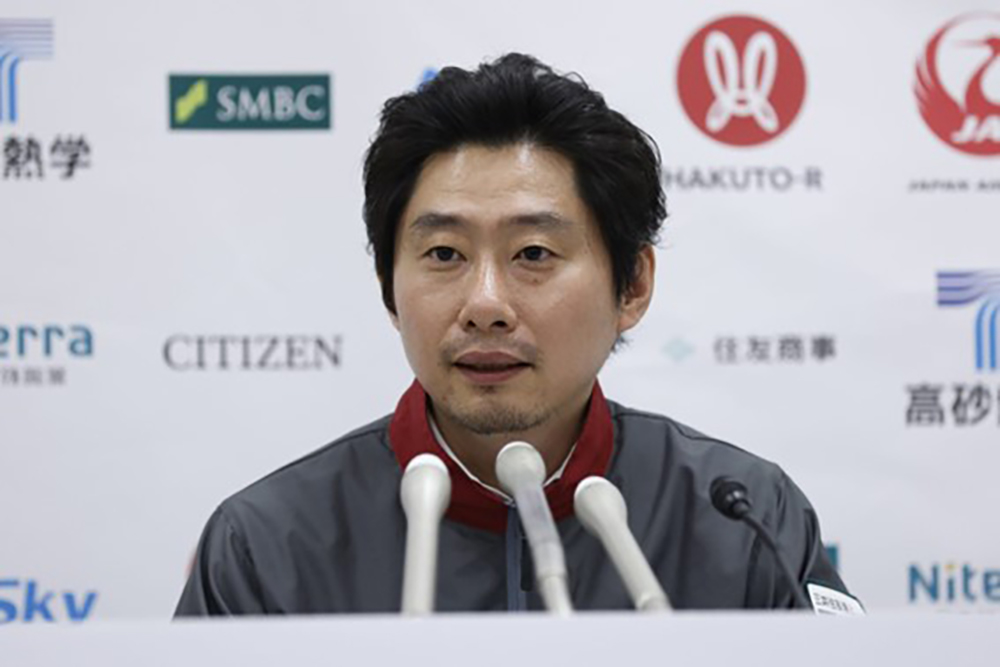
总部位于东京的iSpace公司表示,该公司的月球着陆器与地面失去联系,着陆器很可能在月球表面硬着陆,未能完成月球着陆任务。
该公司有志成为世界首个登陆月球的私营企业,其“白兔-R”太空探索计划“任务一号”(Hakuto-R Mission 1)着陆器计划于日本时间周三凌晨着陆。但在工程师确认着陆器在最终接近月球时处于垂直于月面位置后不久,地面与着陆器的通信就中断了。
“已经确定,着陆器最终在月球表面硬着陆(即坠毁)的可能性很大。”该机构周三在东京发表的一份声明中表示。
该公司首席执行官袴田武史表示,这次事故不会阻止该公司未来的任务。
他在声明中表示:“重要的是将这些知识和学习成果反馈给‘任务2号’及以后的任务,以便我们能够充分利用这些经验。”
去年12月,iSpace公司着陆器搭乘埃隆·马斯克的太空探索技术公司(SpaceX)“猎鹰9号”(Falcon 9)火箭发射升空。它于3月进入月球轨道,携带着两个月球车和其他有效载荷。
该公司本月早些时候在东京证券交易所(Tokyo Stock Exchange)公开上市。该股周二在日本股市收盘下跌1%。首席执行官袴田武史是第二大股东,持有约15%的股份。
iSpace公司是希望将着陆器安全地放置在月球表面的数家商业公司之一。两家美国公司,总部位于休斯顿的直觉机器公司(Intuitive Machines Inc.)和总部位于匹兹堡的Astrobotic Technology Inc.,计划在今年晚些时候进行无人飞行任务。
谷歌奖竞争者
这家总部位于东京的公司于2010年正式成立,旨在参加谷歌月球X大奖(Google Lunar X Prize)太空竞赛。该公司表示,希望在2040年之前建立月球定居点。该公司计划通过向月球运送设备和货物来获取利润。
iSpace公司还与美国的查尔斯·斯塔克·德雷珀实验室(Charles Stark Draper Laboratory)合作,后者与美国国家航空航天局(NASA)签订了一份价值7300万美元的合同,目标是在2025年将该机构的一套有效载荷运送到月球表面,这是美国国家航空航天局阿尔忒弥斯计划(Artemis program,载人重返月球计划)的一小部分。
只有政府和超级大国曾成功地将航天器送上月球表面。以色列非营利组织以色列太空登陆组织(SpaceIL)是另一个获得谷歌月球X大奖的团队,他们在2019年试图将第一个私人资助的着陆器放置在月球表面上,但航天器速度太快,在月球表面坠毁。
日本在太空的努力最近经历了数次挫折。
日本宇宙航空研究开发机构(Japan Aerospace Exploration Agency)的H3运载火箭是由三菱重工业公司(Mitsubishi Heavy Industries Ltd.)设计和制造的,以满足对重型运载火箭日益增长的需求,但该火箭在2月份因系统故障而无法发射,3月份又因其第二级助推器未能点火而在飞行途中发出自毁命令,均以失败告终。
去年5月,美国总统乔·拜登(Joe Biden)和日本首相岸田文雄(Fumio Kishida)宣布,两国将通力合作,将日本首位宇航员送上月球。由于缺乏年轻宇航员,日本宇宙航空研究开发机构今年2月确定了两名候补航天员:一名红十字会外科医生和一名世界银行高级雇员。 (财富中文网)
译者:中慧言-王芳
总部位于东京的iSpace公司表示,该公司的月球着陆器与地面失去联系,着陆器很可能在月球表面硬着陆,未能完成月球着陆任务。
该公司有志成为世界首个登陆月球的私营企业,其“白兔-R”太空探索计划“任务一号”(Hakuto-R Mission 1)着陆器计划于日本时间周三凌晨着陆。但在工程师确认着陆器在最终接近月球时处于垂直于月面位置后不久,地面与着陆器的通信就中断了。
“已经确定,着陆器最终在月球表面硬着陆(即坠毁)的可能性很大。”该机构周三在东京发表的一份声明中表示。
该公司首席执行官袴田武史表示,这次事故不会阻止该公司未来的任务。
他在声明中表示:“重要的是将这些知识和学习成果反馈给‘任务2号’及以后的任务,以便我们能够充分利用这些经验。”
去年12月,iSpace公司着陆器搭乘埃隆·马斯克的太空探索技术公司(SpaceX)“猎鹰9号”(Falcon 9)火箭发射升空。它于3月进入月球轨道,携带着两个月球车和其他有效载荷。
该公司本月早些时候在东京证券交易所(Tokyo Stock Exchange)公开上市。该股周二在日本股市收盘下跌1%。首席执行官袴田武史是第二大股东,持有约15%的股份。
iSpace公司是希望将着陆器安全地放置在月球表面的数家商业公司之一。两家美国公司,总部位于休斯顿的直觉机器公司(Intuitive Machines Inc.)和总部位于匹兹堡的Astrobotic Technology Inc.,计划在今年晚些时候进行无人飞行任务。
谷歌奖竞争者
这家总部位于东京的公司于2010年正式成立,旨在参加谷歌月球X大奖(Google Lunar X Prize)太空竞赛。该公司表示,希望在2040年之前建立月球定居点。该公司计划通过向月球运送设备和货物来获取利润。
iSpace公司还与美国的查尔斯·斯塔克·德雷珀实验室(Charles Stark Draper Laboratory)合作,后者与美国国家航空航天局(NASA)签订了一份价值7300万美元的合同,目标是在2025年将该机构的一套有效载荷运送到月球表面,这是美国国家航空航天局阿尔忒弥斯计划(Artemis program,载人重返月球计划)的一小部分。
只有政府和超级大国曾成功地将航天器送上月球表面。以色列非营利组织以色列太空登陆组织(SpaceIL)是另一个获得谷歌月球X大奖的团队,他们在2019年试图将第一个私人资助的着陆器放置在月球表面上,但航天器速度太快,在月球表面坠毁。
日本在太空的努力最近经历了数次挫折。
日本宇宙航空研究开发机构(Japan Aerospace Exploration Agency)的H3运载火箭是由三菱重工业公司(Mitsubishi Heavy Industries Ltd.)设计和制造的,以满足对重型运载火箭日益增长的需求,但该火箭在2月份因系统故障而无法发射,3月份又因其第二级助推器未能点火而在飞行途中发出自毁命令,均以失败告终。
去年5月,美国总统乔·拜登(Joe Biden)和日本首相岸田文雄(Fumio Kishida)宣布,两国将通力合作,将日本首位宇航员送上月球。由于缺乏年轻宇航员,日本宇宙航空研究开发机构今年2月确定了两名候补航天员:一名红十字会外科医生和一名世界银行高级雇员。 (财富中文网)
译者:中慧言-王芳
Tokyo-based Ispace said it lost contact with a lander bound for the moon and that the spacecraft likely made a hard landing on the lunar surface, ending the mission.
The company aimed to become the first commercial space attempt to place a lander on the moon intact, with its Hakuto-R Mission 1 lander scheduled to touch down early Wednesday morning Japan time. But communication with the spacecraft was lost shortly after engineers confirmed the lander was in a vertical position on final approach.
“It has been determined that there is a high probability that the lander eventually made a hard landing on the moon’s surface,” it said in a statement issued Wednesday in Tokyo.
Chief Executive Officer Takeshi Hakamada said the mishap would not deter the company from future missions.
“What is important is to feed this knowledge and learning back to Mission 2 and beyond so that we can make the most of this experience,” he said in the statement.
Ispace launched its lander in December aboard one of Elon Musk’s SpaceX Falcon 9 rockets. It entered lunar orbit in March and was carrying two rovers and other payloads.
The company earlier this month publicly listed its shares on the Tokyo Stock Exchange. The stock closed down 1% on Tuesday in Japan. CEO Hakamada is the second-largest shareholder with an ownership stake of about 15%.
Ispace is one of several companies hoping to place the first commercial lander on the moon’s surface. Two US firms, Houston-based Intuitive Machines Inc. and Pittsburgh-based Astrobotic Technology Inc., have uncrewed missions planned for later this year.
Google Prize Contender
Officially formed in 2010 to compete in the Google Lunar X Prize, the Tokyo-based company has said it wants to create a lunar settlement by 2040. It plans to make money by delivering equipment and goods to and from the moon.
Ispace also has partnered with the US-based Charles Stark Draper Laboratory, which holds a $73 million contract with NASA to deliver a suite of the agency’s payloads to the lunar surface in 2025, a small part of NASA’s Artemis program to return astronauts to the moon.
Only governments and superpowers have been able to successfully land vehicles on the moon. The Israeli nonprofit SpaceIL, another Google Lunar X Prize team, tried in 2019 to place the first privately funded lander on the moon, but the spacecraft came in too fast and crashed on the surface.
Japan’s space efforts have recently experienced several setbacks.
The Japan Aerospace Exploration Agency’s H3 rocket, designed and manufactured by Mitsubishi Heavy Industries Ltd. to meet growing demand for rockets with large payload capacity, failed to launch once in February after a system malfunction kept it grounded, and again in March when a self-destruct order was sent mid-flight after its second-stage booster failed to ignite.
US President Joe Biden and Japanese Prime Minister Fumio Kishida announced last May that their countries would work together to put the first Japanese astronaut on the moon. A dearth of young astronauts led the Japanese space agency in February to recruit two civilians, a Red Cross surgeon and a World Bank senior employee.






